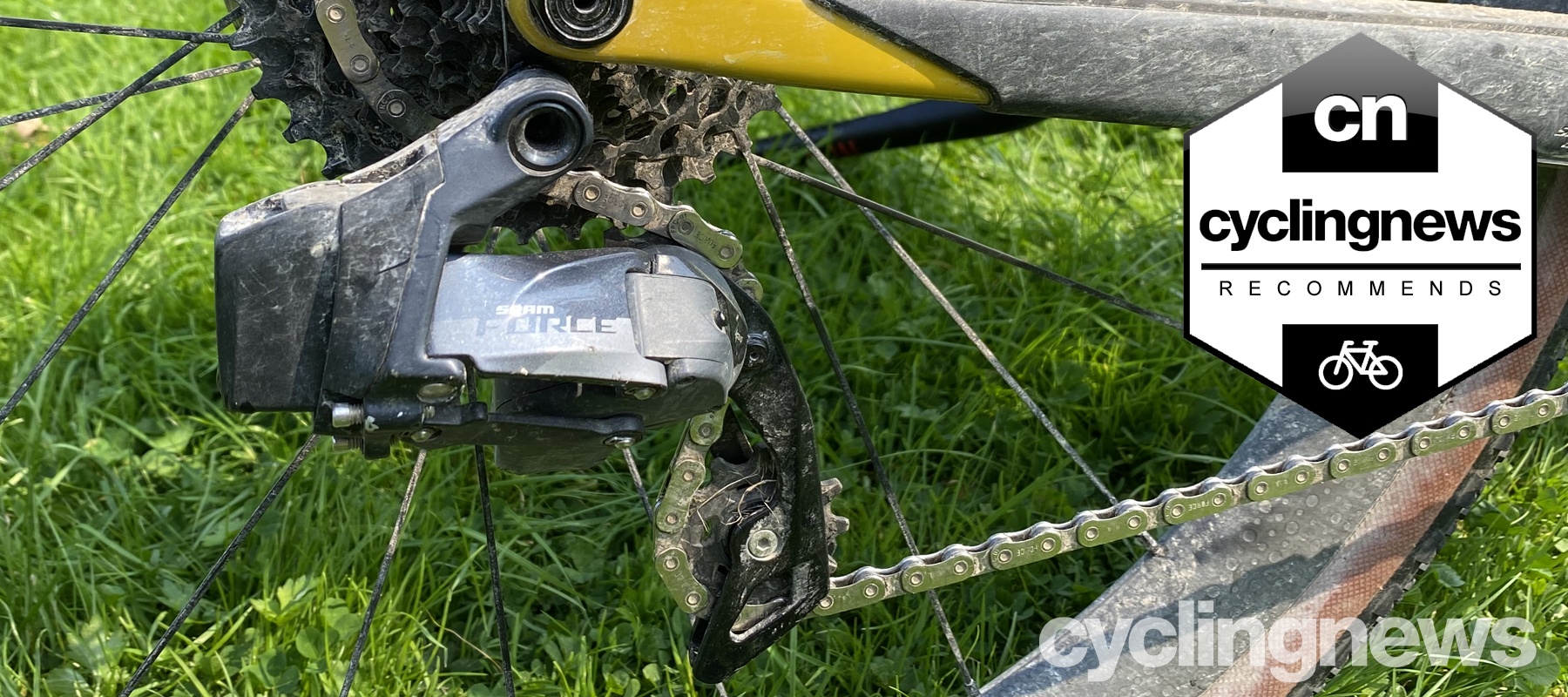Cyclingnews Verdict
Next-level wireless functionality, blissfully easy set-up, realistic ratios and mostly fantastic shifting extends SRAM's benchmark lockdown further into both on- and off-road riding
Pros
- +
Flawless wireless comms
- +
Blissful set-up
- +
Excellent ratios
- +
Increased tyre space
- +
Quiet security
- +
Impressive reliability
Cons
- -
High price
- -
Simultaneous shifts can be clunky
- -
No power meter option
You can trust Cyclingnews
Whether you see it as a logical extension of the existing Force eTap AXS groupset from SRAM or a response to the popularity of Shimano's GRX double gravel group, adding lower ratios to the SRAM 'ecosystem', making cadence smoother, is a definite win for a lot of riders. It's not just a new set of cogs, though: tyre and frame clearance has also been increased with a new front mech and axle standard. When you put it all together, it's a fantastically smooth, intuitive, reliable and customisable shifting system for wherever you take your dropped-bar bike.
- Best gravel bikes: Fun and fast adventure bikes for your next off-road ride
Set-up
With wireless communication and batteries mounted on the mechs themselves, rather than on or in the frame, the totally cable-free eTap AXS has always been blissfully easy to set up and install. The Wide Range chainset uses a wider-than-normal 47.5mm chain line that needs a specific wider version of the DUB bottom bracket, and the front mech also sits out wider. This allows better chain clearance for wider tyres and better chainring clearance on frames designed to work with capacious tyre spacing.
While adding a front mech obviously adds an extra phase of set-up compared to a single ring set-up, the cage is marked with guidelines to make it as simple as possible, and once we'd 'trimmed' the shifter by nudging it back and forth in the set-up mode, it ran sweet from the start of the test to the finish.
As the extra chainline width is created by the spindle, you can even switch to a conventional double-ring spider or direct-mount single ring from the specific 94BCD Wide Range spider. There are even Wide Range eBike options for Bosch, Fazua and Mahle motors. The only downside for serious gravel riders/racers is the lack of space to offer a power-measuring spider option.
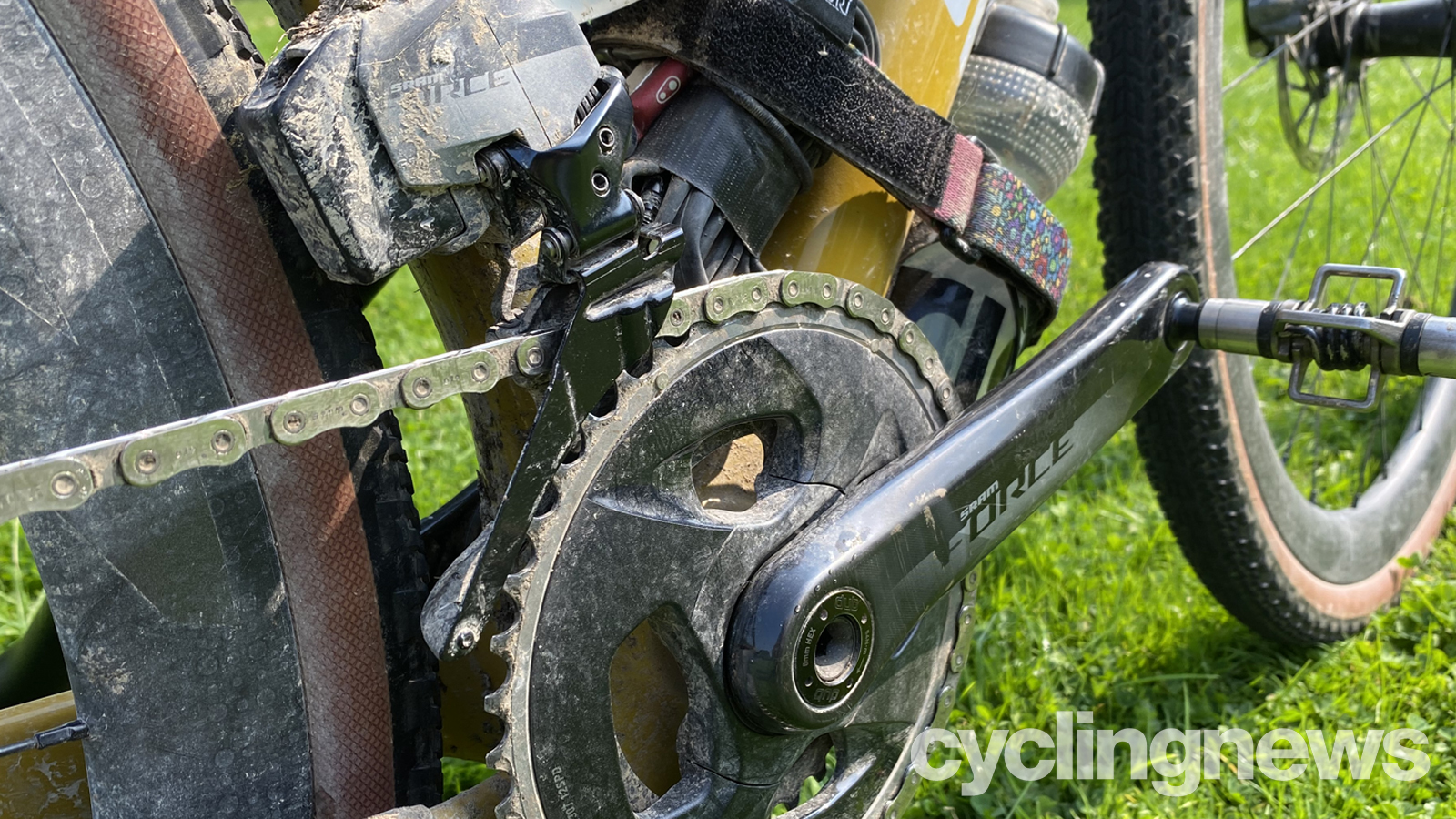
There's very in-depth data mining of ratio use, distance/time ridden, shifting patterns etc. which can be done via SRAM's AXS rider app, and which uses a Garmin head unit (we're currently using a Beta version for Wahoo, too) to capture the data before downloading post-ride.
Numbers
The primary maths with the Wide Range are the combination of a 43/30-tooth chainset with a 10-36-tooth cassette. This keeps the same 13-tooth front ring gap as a 'standard' X-Range eTap AXS, but adds a 360% spread across the cassette to give an overall gear spread of 516%. That means you're travelling 4.3 wheel revolutions for every crank turn in top gear, but an effortless 0.83 bottom ratio.
If you don't need that much spread, then a 10-33 cassette gives a 473% range with a 0.91 gain ratio in bottom gear. Either way, the first four cogs are all sequential, too, so there are no jarring jumps or leg curdling gaps when you're flat out.
In comparison, Shimano GRX (which is obviously an 11-speed set-up with an 11-tooth smallest cog and bigger 16- or 17-tooth gaps between chainrings) gives a 479% range and 0.91 lowest ratio with a 48-31 x 11-34 set-up, or a 474% range and 0.88 lowest gear with a 46-30 x 11-34 set-up.
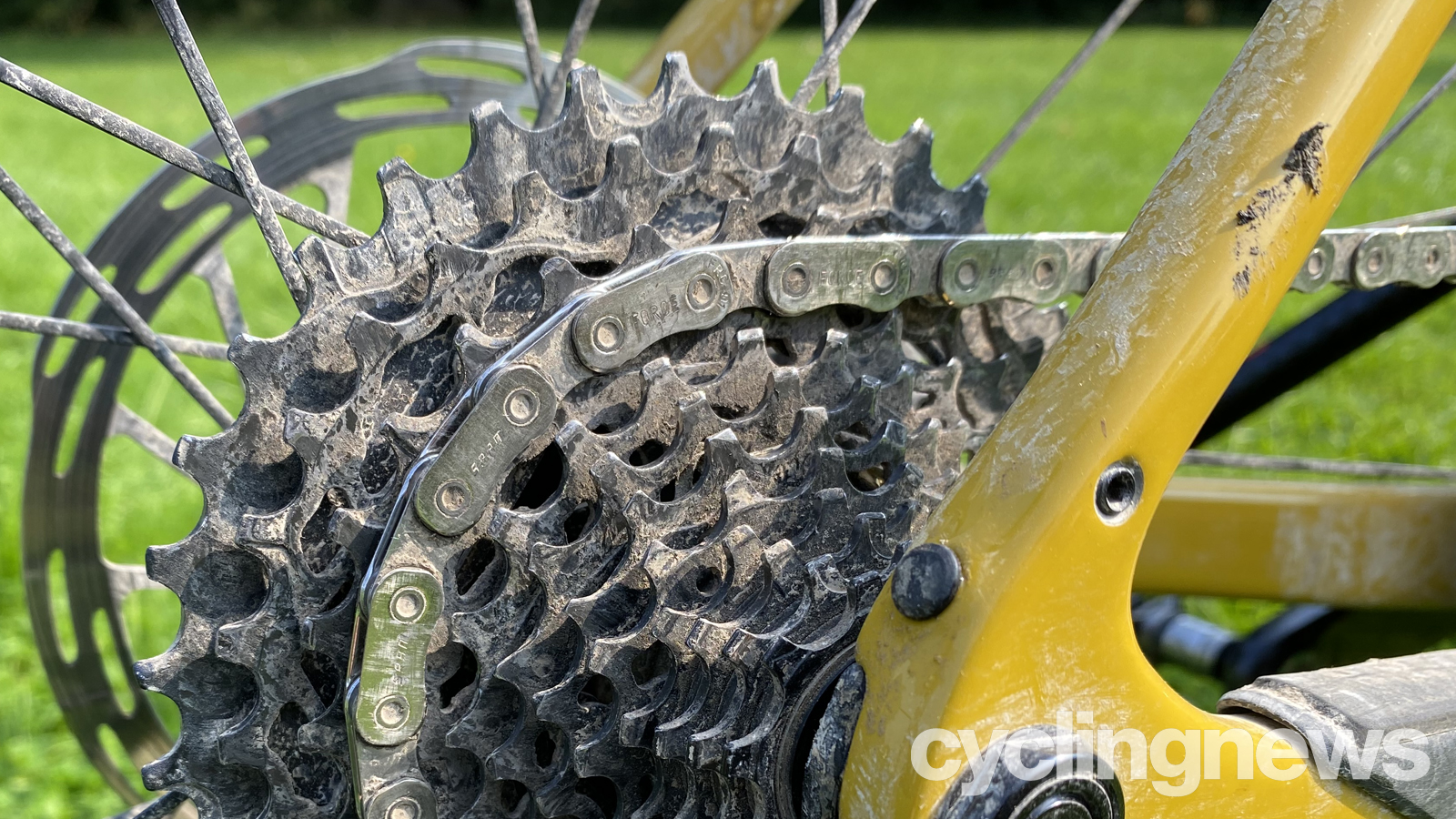
The hardware managing the ratios is slightly different, with a 2.5mm wider front-mech spacing, as mentioned before, and a new 'Max' derailleur. These (and the chainset) get a new gloss finish on the outer link, and the front mech will work with X-Range 46-33T chainrings on the wider axle (giving a 502% range).
The new 10-36 cassette also works fine with a single ring for road/CX/TT/flatter gravel use. However, if you're thinking of chucking a close-ratio road or Eagle MTB block into the mix, then be warned that this won't work with a 10-26 or 10-50/52 cassette.
Otherwise, you get the same larger roller and tooth gaps for reduced friction and increased wear life, and the tougher, aesthetically awesome flat-top chain.
While the brakes and main shifters aren't changed, the auxiliary 'Multiclics' button now sits on a fixing plate that anchors it under the bar tape, with the button pushing through the gap for a much more obvious and tactile feel. Complete bikes will use a new single-piece but bi-colour 'Paceline' disc rotor, which is available in 160 and 140mm in a six-bolt and centrelock fitting.
Performance
Our Wide Range suite came installed on a Santa Cruz Stigmata, with both a Zipp 303s carbon wheelset and Zipp 303 Firecrest carbon wheels, so we've put a lot of time into it, both on- and off-road.
That started with three days of 400km on the gravel/borderline MTB tracks of the new King Alfred's Way route in the south of England in typically English weather. Rain, shine, grind or spin, the results were outstanding. We had ratios low enough to crawl a loaded bike up hills we'd grumble about if we had to walk, but at the top end we could reach 55kph without getting silly with cadence.
Shifting was always super accurate and well-measured, too, so while it wasn't sometimes as instant as we expected, it dropped in at just the right point to be seamless and quiet, rather than an ugly clunk. The Orbit fluid damper on the rear mech kept the chain very quiet and secure, even on the fastest flint-rock or tractor-tread descents. We deliberately didn't clean the drivetrain beyond a quick chain wipe and re-lube each night, either, but despite a good coating of chalk and mud, there was no issue with mech mobility or accuracy.
The better tyre clearance (we were running Zipp 40mm tyres), large diameter rollers and the flat-top chain kept things quiet and efficient in feel, even on very slow-speed, dirty climbs, which was a real morale boost compared to having a noisy, grinding set-up. Even when we accidentally clobbered the rear mech on a fence post, re-trimming from the shifters was easy until we could sort a more accurate hanger alignment. The Multiclic levers on the bar tops were super useful for changing gear on tempo climbs, too.
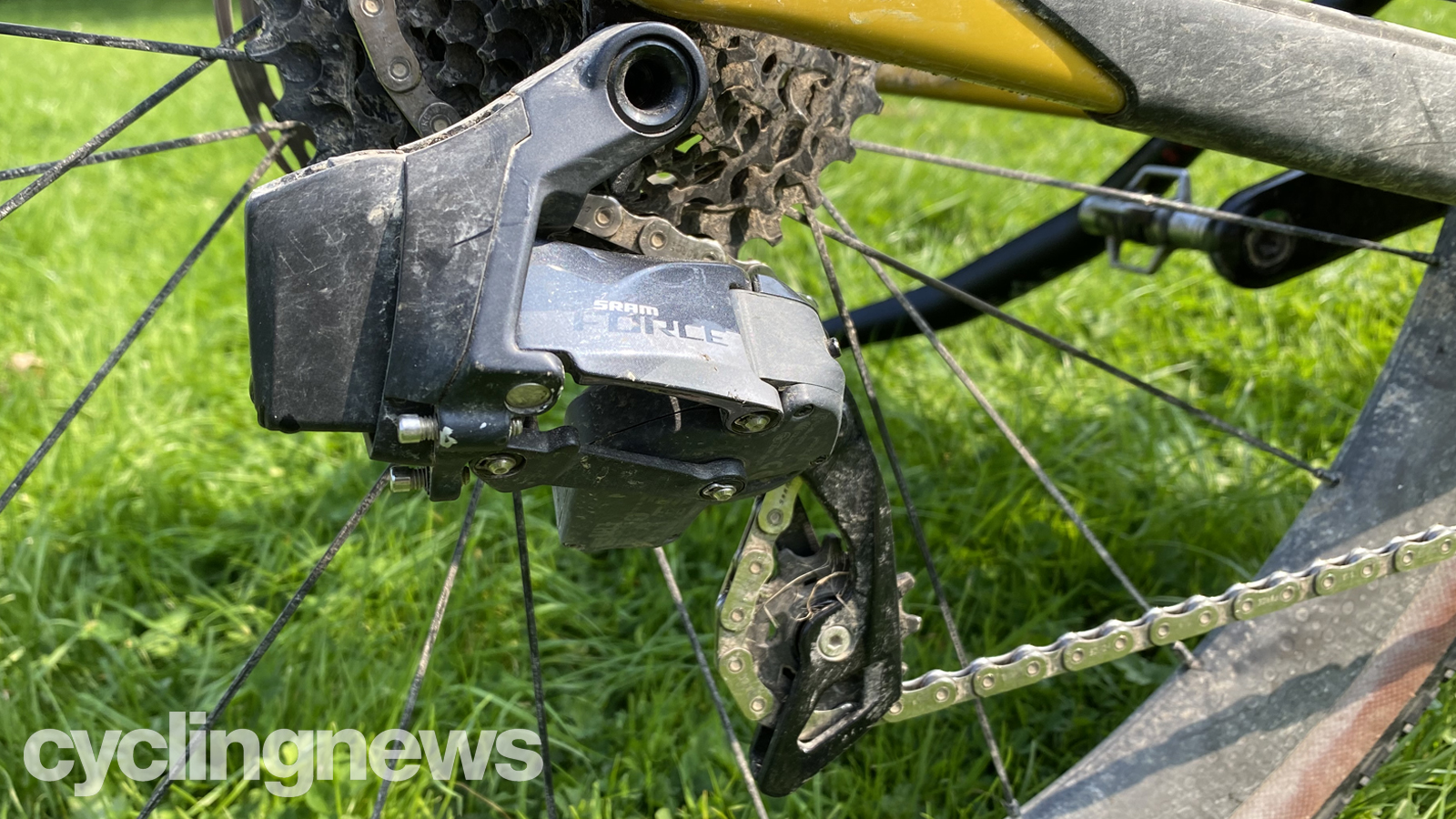
- Best gravel bike wheels: Our pick of the best gravel wheels for racing and adventure riding
- Best gravel tyres: from dusty to dirty, here's our pick of the best tyres for your gravel bike
The only glitch we did have was that the 'fully automatic' option in the shifting occasionally clunked really obviously when it made a simultaneous front and rear shift at slow speeds under heavy load. That meant that while we loved it for its brain-free sequential management of the full 24-gear spread on less taxing terrain and road, we did stop using it for more technical and/or steeper sections. Going back to the default set-up is just a simple matter of a button-press on the shifters, though, so it's really no issue if you do find it struggling.
Restoring preferred shifting and checking battery life via the SRAM AXS app is easy. While we took spare batteries, just in case, we still had plenty of front and rear charge left after three days of roller-coaster riding with no recharging. If we had to niggle, being able to get an exact percentage-charge-remaining reading via the app would be useful, rather than just a warning alert, but front and rear batteries can be swapped if you do run dry.
Perhaps unsurprisingly, road use since its rather brutal initiation on prehistoric drove trails, flint singletrack and the sandy forests of the Surrey Hills has been equally trouble-free. While we've only been using it for a relatively short time, the Wahoo data collection has proved what we were already thinking: that for mixed riding, the new Wide Range ratios are right in the cadence and comfort sweet-spot if you're governed by efficiency, and not ego, when it comes to gear choice.
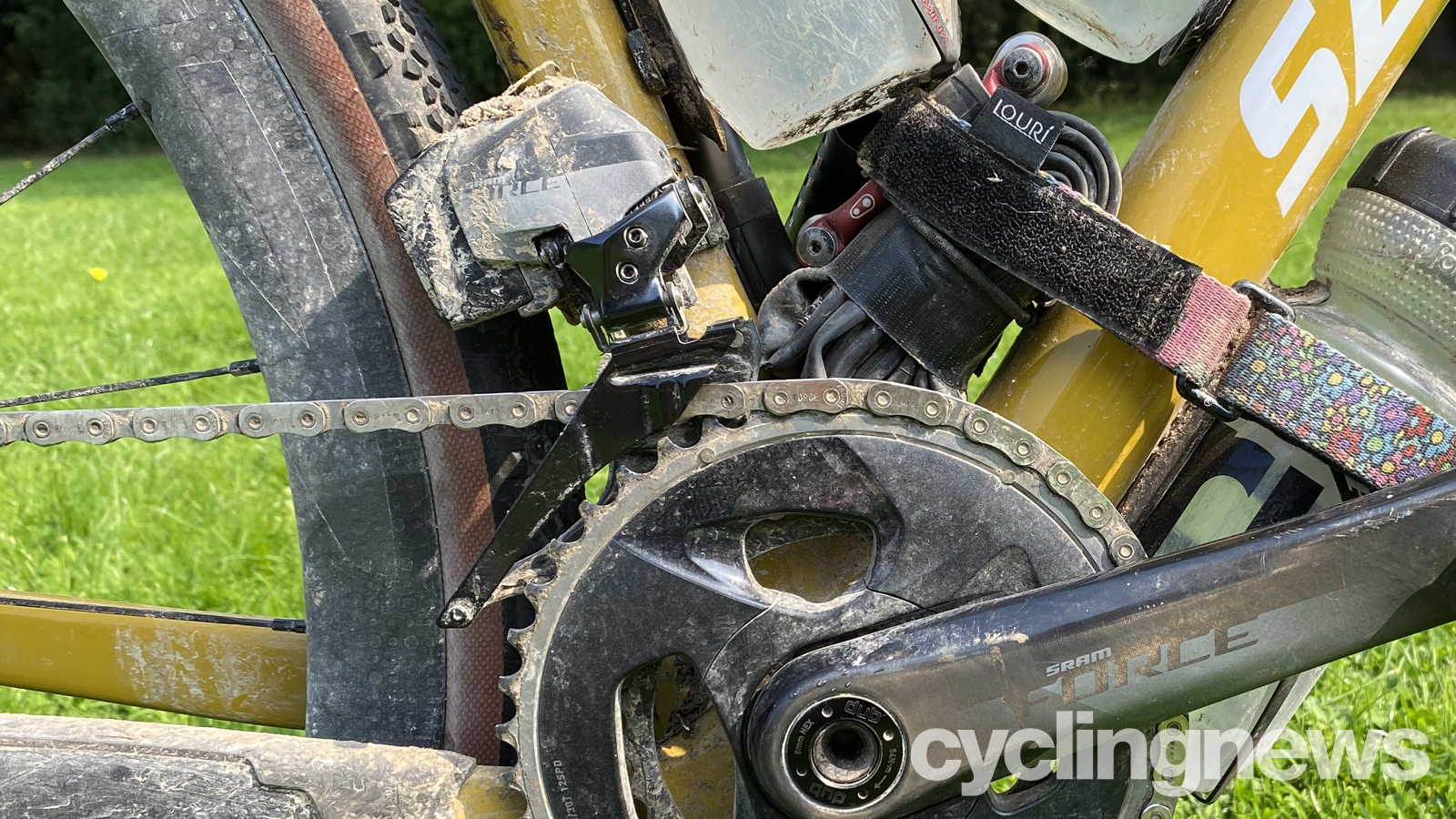
Verdict
Going almost straight from unboxing into a tough, three-day gravel adventure was a big ask, but SRAM's new Wide Range never faltered. Out of thousands of wet, dry, spinning or gurning shifts, there were just a handful of ugly clunk movements when we didn't back off the power and it was trying to double shift in 'auto' mode (we were testing not tickling, OK?). Otherwise, it took flat-out blasting along technical singletrack and washboard tractor ruts, regular undergrowth entanglement and a fence post slap totally in its stride.
While I'd consider myself to be a single-ring evangelist – even on the road – a tighter twin-ring ratio range undoubtedly keeps cadence a lot smoother and more efficient, whether that's winching up the last sunset hill of a long day or playing pro peloton on a training thrash. The plug-and-play versatility of the whole AXS ecosystem, the app (and now web-data collection) elements for tuning the exact function of your gearing are also genuinely valuable additions to your bike life – not just show-and-tell gimmicks.
In other words, if you can afford it, SRAM eTap AXS Wide Range is undoubtedly the ultimate in on/off-road transmission versatility for the further/wilder drop-bar riders.
Tech spec: SRAM Force eTap AXS Wide Range
- SRAM Force eTap AXS rear mech: 325g (including battery), €465
- SRAM Force eTap AXS Wide Range front mech: 178g (including battery), €325
- SRAM Force Wide Range chainset: 694g, €435
- SRAM Force XG1270 Wide Range cassette: 303g, €190
- SRAM Force chain: 253g, €35
